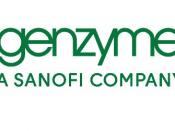Early in 1997, Genzyme Corporation began negotiations with Geltex Pharmaceuticals in an attempt to launch a joint venture to market Geltex's first product, RenaGel. Geltex was a young biotech research company with only two products in its pipeline, and they didn't have the resources necessary to launch RenaGel on their own. Genzyme, on the other hand, was a quickly growing company that experienced revenues of $518 million in 1996. They were attracted to the joint venture with Geltex because of the likelihood of increased earnings, as well as the joint venture being an excellent fit for Genzyme's specialty therapeutics. Genzyme also felt that the joint venture would lead to a similar deal in launching Geltex's second product, CholestaGel. Before cementing a deal with Geltex, Genzyme managers had to ask themselves three questions:
What is the likely enterprise value of the joint venture?
How much of the venture should Genzyme acquire?
How much should Genzyme pay for its interest?
We will attempt to answer these questions by first giving a brief overview of the two companies involved, and then by calculating the Net Present Value of the joint venture based on expected cash flows.
Because we were given no operating history of the two companies, this is the only method we will use to determine what interest Genzyme should take in the joint venture. We will provide answers in three different scenarios: Genzyme's estimates, conservative, and worst-case.
Launched in 1981 by Henry Blair, Genzyme Corporation is the fourth-largest biotech company in America. What differentiates Genzyme from its competition is that it uses living organisms or their products to generate drugs, rather than chemicals. Genzyme made its name in the industry with Ceradase, a treatment for Gaucher's disease. This drug was approved for sale in March of 1991 and had a...



Genzyme/GelTex
Where are the exhibits?
5 out of 5 people found this comment useful.